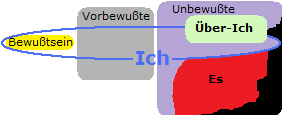日本語 Japanese, Français, English, Italiano, Español, Deutsch, Português
The Kuriki method (the first edition in 2007) is a theory about Tourette’s syndrome (tic disorder) and obsessive-compulsive disorder to cure these diseases without medication. This theory is based on the author’s inference and interpretation regarding the structure of these diseases. Since it has been written for the psychoanalysts, reading will be difficult for people in general and it might be sometimes read erroneously. Therefore the Kuriki method must presuppose that the patient is treated by a nearby psychoanalyst, and that, between the patient and the Kuriki method, there is always the psychoanalyst. The explosion of emotional catharsis, which has strong repercussions, is done only for three seconds, once a week: beyond this rhythm, it would be an accident caused by negligence, and the psychoanalyst who is inexperienced in emotional catharsis must take responsibility for the temporary mental collapse caused by the accident. Also, to the patient who has weak capacity of logical reasoning, the psychoanalyst must explain well on the violent emotion of revenge caused by the illusory confusion between the person of the traumatic image in his head and the person in the real world.
Cure for Tourette’s syndrome (tic disorder) and OCD without medication
§44
Freud could not heal tic disorder. It seems to me that Sigmund Freud considered the function of repression as a kind of literature. Here, the table of differences between Freudian psychoanalysis and the Kuriki method.
| Psychoanalysis of Sigmund Freud The psychic structure for the treatment of neurosis(after 1923) |
The Kuriki Method The psychic structure for the treatment of tic disorder. |
 |
 |
| The structure consists of the Super-ego, the Ego and the Id. The Ego extends widely in the Unconscious. Neurosis is a disease of the Ego. | The structure consists of the Unconscious, the Super-ego, the Conscious and the body. Tic disorder is a double structure of the repression of a mass of emotion at libidinal level and the repression of bodily sensations, KV. |
| The function of the Super-ego is rather ethical, etc.
The repression belongs to the defense mechanisms of the Ego. The defense mechanisms are defenses of the Ego against the collision between the Super-ego and the Id. |
Repression is the restriction of objects of the Conscious, and it includes also bodily sensations. The Libido is never repressed. Very small children of three years can have a tic disorder before the formation of the Freudian Super-ego. So the Freudian Ego is not the question. |
| Abreaction (catharsis) is done by talking about the found trauma. | Patients with Tourette’s syndrome have a very strong insulator of repression. Intentional emotional catharses are needed. |
| It is difficult to remember the image of a trauma. | Patients with Tourette’s syndrome have a strong tendency of repression, and the disagreeable judgement has been stored since the age of baby. The surface of the traumatic image is always visible. |
| Infantilism is a regression of the Ego, facing the reality principle. | Infantilism is the legitimacy of the rationalization of an act, which is a means of repression of bodily sensations. |
| The symptom of neurosis is the expression of the content of a trauma. | The symptom of neurosis is unrelated to the content of the trauma. |
| A possibility of the congenital cause of tic disorder as anomaly of the intentionality of the Conscious in ADHD (attention deficit hyperactivity disorder) and Asperger’s syndrome (autistic spectrum disorders). |
Summary Introduction 01 02 03 04 05 06 07 08 09 10 11 12 13 14 15 16 17 18 19 20 21 22 23 24 25 26 27 28 29 30 31 32 33 34 35 36 37 38 39 40 41 42 43 44 45 46 47 48 49 50 [pdf] [Appendix; A classical therapy for panic disorder and phobia] [Donate to the author]
